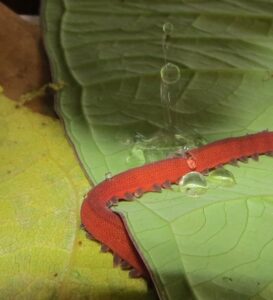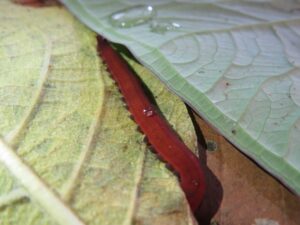Artificial Onychophora skin
Background
Velvet worms, also known as peripatus or onychophorans [1], are a phylum of evolutionary importance that has survived all mass extinctions since the Cambrian period. They capture prey with an adhesive net that is formed in a fraction of a second [2]. The same glue that they produce does not produce any effect on their own skin. Furthermore, many onychophorans live in places rainy forests where floodings are quite common, but somehow, they rarely drawn. We have observed that their skin is superhydrophobic and when submerged in water they stay afloat with the help of a super bubble that surrounds their whole body. In this research we will try to mimic this wonderful life vest using soft polymers and will investigates the physical limits of this system.


Video with information: https://www.youtube.com/watch?v=do9YivjrAFk
IRES student involvement
Students will be trained in the basics of drop formation hydrophobicity and microscopy. They will propose ways to mimic the velvet worm skin with different materials, and will prepare samples to test the effect of microstructure and elasticity on the wetting properties of the artificial Onychophora skin. Measurements of contact angle and droplet impact dynamics will be performed.
References
[1] B Morera-Brenes & J Monge-Nájera. A new giant species of placented worm and the mechanism by which onychophorans weave their nets (onychophora: Peripatidae). Rev. Biol. Trop., 2010.
[2] A Concha, P Mellado, B Morera-Brenes, et al. Oscillation of the velvet worm slime jet by passive hydrodynamic instability. Nat Commun., 2015.